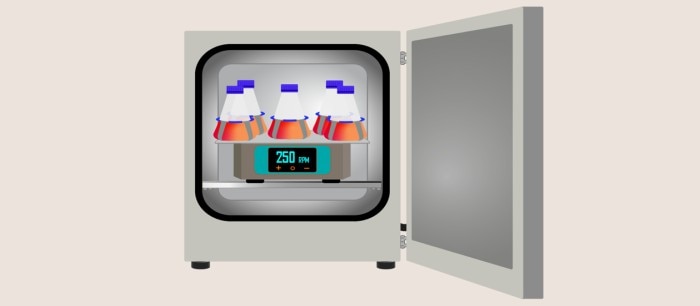MENU
MA | EUR
-
-
-
- Services pour bioprocédés
- Services pour centrifugeuse et rotors
- Services pour Mastercycler
- Services pour automates de pipetage
- Services pour congélateurs
- Services pour incubateurs
- Services pour agitateurs
- Services pour appareils de photométrie
- Service de contrôle de la température et de l’agitation
- Service pour pipette
-
-
-
-
- Services pour bioprocédés
- Services pour centrifugeuse et rotors
- Services pour Mastercycler
- Services pour automates de pipetage
- Services pour congélateurs
- Services pour incubateurs
- Services pour agitateurs
- Services pour appareils de photométrie
- Service de contrôle de la température et de l’agitation
- Service pour pipette
-
MA | EUR
-
- Centrifugeuses de paillasse
- Centrifugeuses au sol
- Centrifugeuses réfrigérées
- Microcentrifugeuses
- Centrifugeuses multi-fonctions
- Centrifugeuses haute vitesse
- Ultracentrifugeuses
- Concentrateur
- Produits IVD
- High-Speed and Ultracentrifuge Consumables
- Tubes de centrifugeuse
- Plaques de centrifugeuse
- Gestion des appareils
- Gestion des échantillons et des informations
Vous vous apprêtez à quitter ce site.
Veuillez noter que votre panier actuel n’est pas encore enregistré et ne pourra pas être affiché sur le nouveau site ou lors de votre prochaine visite. Si vous souhaitez enregistrer votre panier, veuillez vous connecter sur votre compte.
Aucun résultat trouvé
Chercher des suggestions

What is a CO2-resistant shaker?
Lab Academy
- Biologie cellulaire
- Culture cellulaire
- Le quotidien au labo
- Efficacité
- Contamination
- Incubateurs à CO2
- FAQ
This article was published first in "Inside Cell Culture" , the monthly newsletter for cell culture professionals. Find more interesting articles about CO2 incubators on our page "FAQs and material on CO2 incubators" .
A CO2-resistant shaker is used to agitate a small number of shake flasks with mammalian cells in suspension culture inside a CO2 incubator. These cultures are, for example used for the expression of recombinant proteins or the production of bioreactor starter-cultures (inoculum). For higher throughput, CO2 incubators with an integrated shaker are used.
The term “CO2-resistant shaker” itself that is often used, also by manufacturers, is clearly misleading as it doesn´t address the main challenge these devices are facing and overcoming inside a CO2 incubator. The elevated CO2-concentration itself inside the incubator chamber is not the main challenge. However, together with the high relative humidity (usually ~95%) CO2-resistant shakers face a slightly acidic atmosphere that is highly corrosive. In addition, this humid atmosphere can lead to electronic malfunctions and spills of culture medium entering the device may form a contamination nucleus that is hard to detect and remove. Therefore, in contrast to standard open-air shakers, a CO2 resistant shaker comes with design specialized for the use inside a CO2 incubator.
Features and limitations of a typical CO2 resistant shaker:
Read more about the proper selection of a CO2 resistant orbital shaker in our White Paper .
A CO2-resistant shaker is used to agitate a small number of shake flasks with mammalian cells in suspension culture inside a CO2 incubator. These cultures are, for example used for the expression of recombinant proteins or the production of bioreactor starter-cultures (inoculum). For higher throughput, CO2 incubators with an integrated shaker are used.
The term “CO2-resistant shaker” itself that is often used, also by manufacturers, is clearly misleading as it doesn´t address the main challenge these devices are facing and overcoming inside a CO2 incubator. The elevated CO2-concentration itself inside the incubator chamber is not the main challenge. However, together with the high relative humidity (usually ~95%) CO2-resistant shakers face a slightly acidic atmosphere that is highly corrosive. In addition, this humid atmosphere can lead to electronic malfunctions and spills of culture medium entering the device may form a contamination nucleus that is hard to detect and remove. Therefore, in contrast to standard open-air shakers, a CO2 resistant shaker comes with design specialized for the use inside a CO2 incubator.
Features and limitations of a typical CO2 resistant shaker:
- Low heat dissipation to avoid interference with the temperature control of the CO2 incubator
- Sealed electronics and mechanical parts to avoid malfunctions, corrosion, and contamination inside
- Corrosion-resistant exterior made of stainless steel or specialized plastics like Acrylonitrile butadiene styrene (ABS) that can also be disinfected
- Platform capacity and drive design limited to shake a few 1L flasks (low throughput applications)
- Some devices are limited to 200 rpm and may therefore not be suitable for protocols with higher rpm of plates and tubes
- Limited use with parallel cultivation of vibration-sensitive adherent cells like stem cells or primary cells due to transfer of vibrations
Read more about the proper selection of a CO2 resistant orbital shaker in our White Paper .
Lire moins
